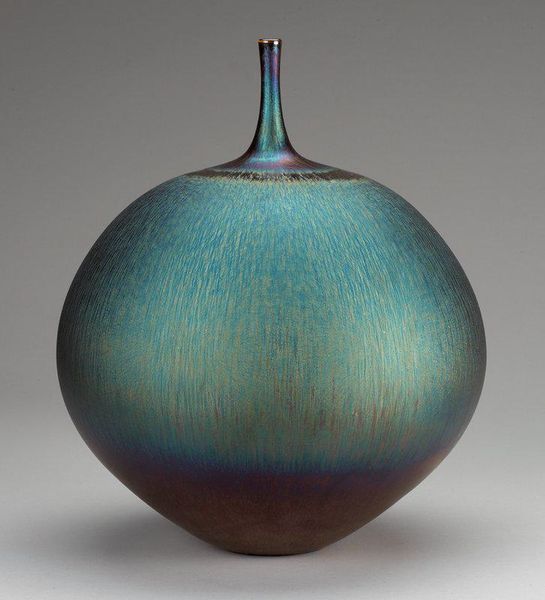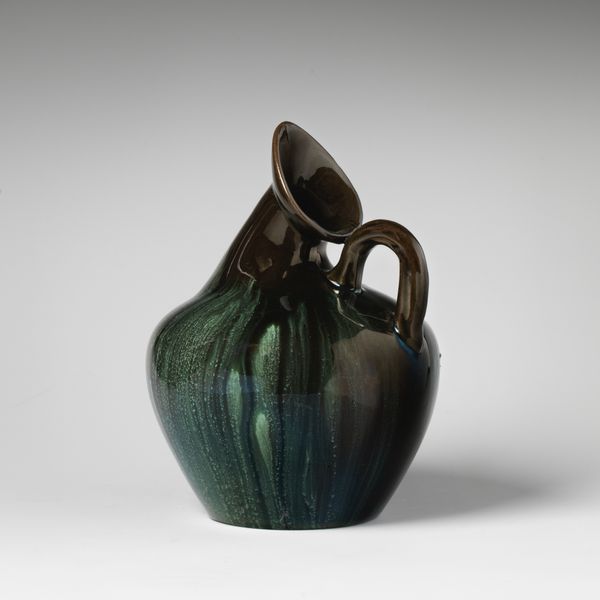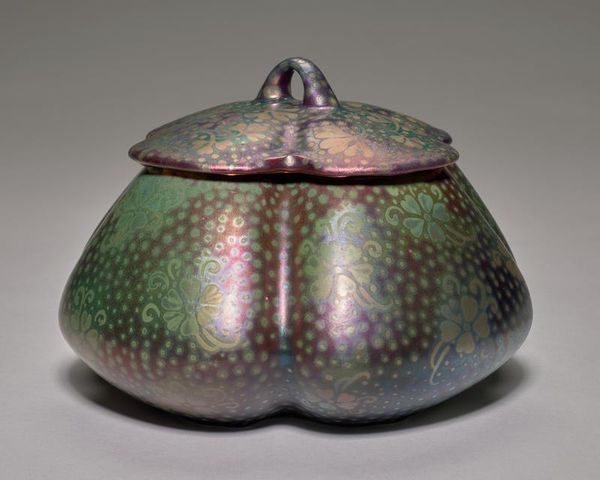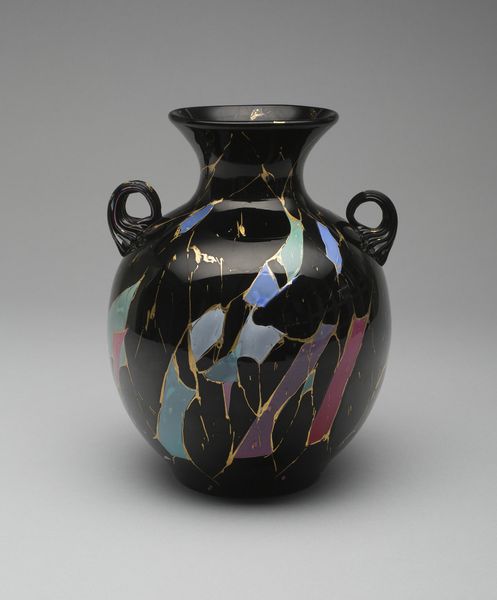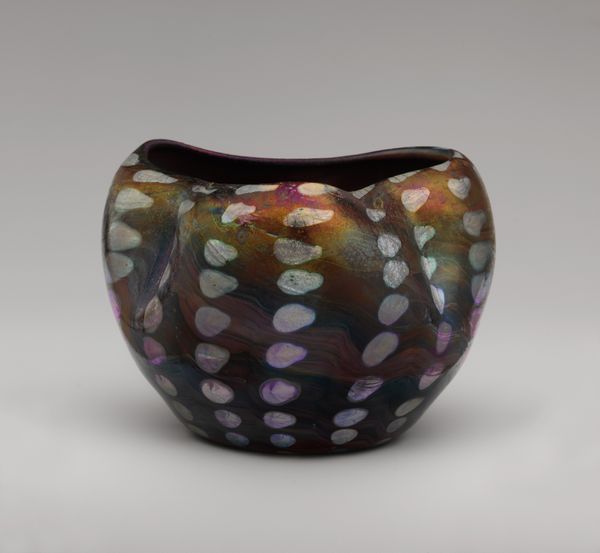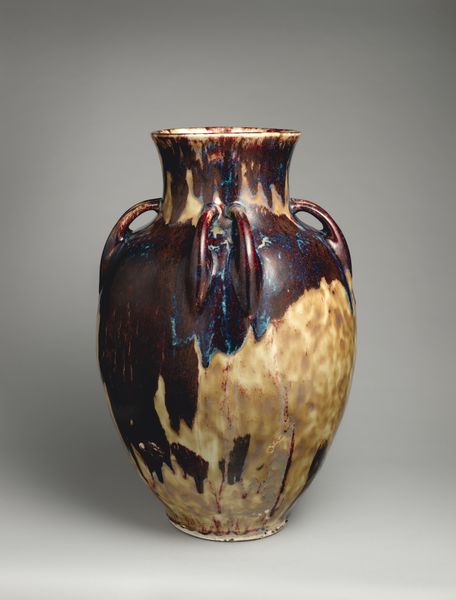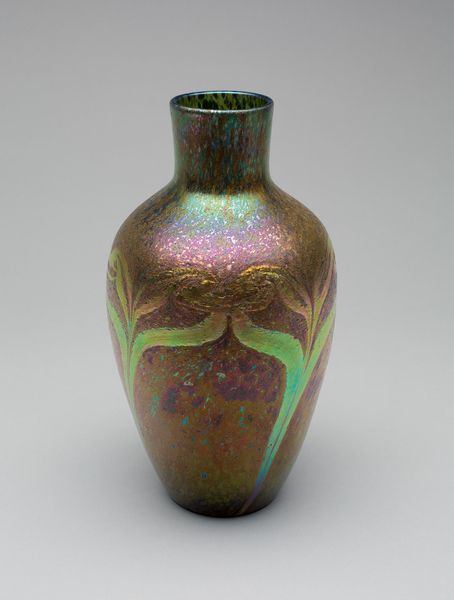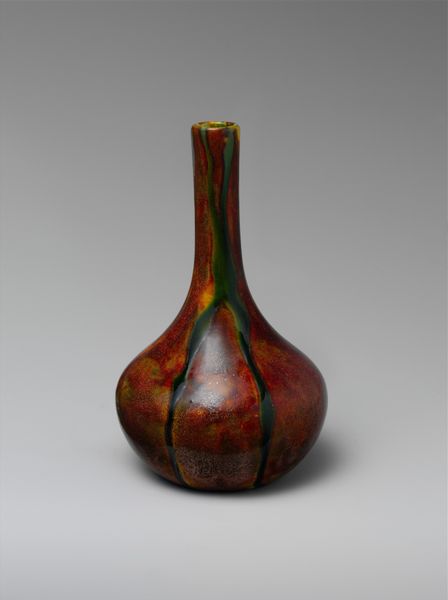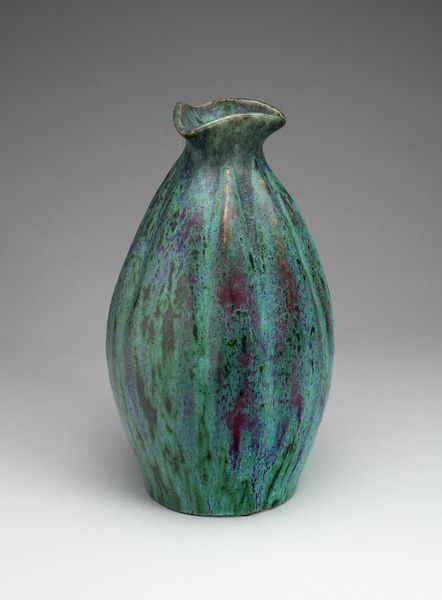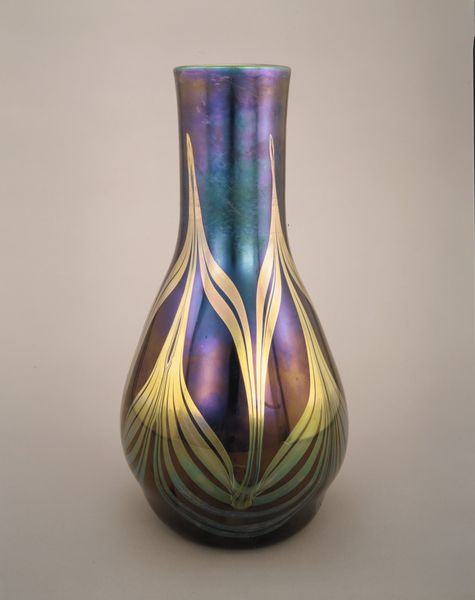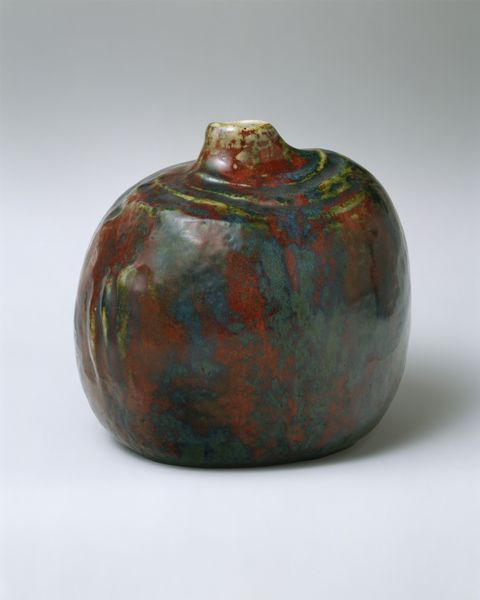
ceramic, sculpture
#
3d sculpting
#
egg art
#
3d printed part
#
ceramic
#
jewelry design
#
food illustration
#
sculpture
#
ceramic
#
metallic object render
#
watercolour bleed
#
watercolour illustration
#
product photography
#
decorative-art
Dimensions: Overall (confirmed): 14 1/8 × 11 3/16 × 12 3/16 in. (35.9 × 28.4 × 31 cm)
Copyright: Public Domain
Editor: Here we have "Jug" by Christopher Dresser, created between 1875 and 1885. It's a ceramic piece currently housed at the Metropolitan Museum of Art. The glossy, iridescent glaze is what immediately catches my eye. How do you approach a piece like this, focusing on its form and materials? Curator: The jug presents an intriguing study in contrasts. Observe how Dresser utilizes the ceramic medium. Its smoothness juxtaposes with the textured effect achieved through the glazing technique, producing a captivating interplay of light and shadow across its surface. Editor: I see what you mean. The glaze almost gives the impression of movement, like rain streaming down the jug. Is that intentional, do you think? Curator: Possibly. Consider how the vertical striations created by the glaze elongate and streamline the form, drawing the eye upward. The colour shift across the surface is not incidental but adds to its formal complexity, transforming a utilitarian vessel into a visually dynamic object. Also, note the angularity of the handle compared with the roundness of the body. It introduces a stark contrast to its gentle curves, what does this mean for the work as a whole? Editor: It's almost jarring, the sharp handle against the smooth curves. But maybe that tension is what makes it so interesting. Is that kind of tension a common device in decorative arts of this period? Curator: One can find elements of this nature during that period, yes. Though in this instance it serves to accentuate the overall design. It highlights not just function, but also how even practical items may have complex design considerations embedded within their structure. Editor: This close look at the form really changes how I see it. It’s not just a jug; it's a play of lines, textures, and colours, isn't it? Curator: Precisely. By analysing the material and construction, one finds inherent meaning within the aesthetic itself.
Comments
No comments
Be the first to comment and join the conversation on the ultimate creative platform.

